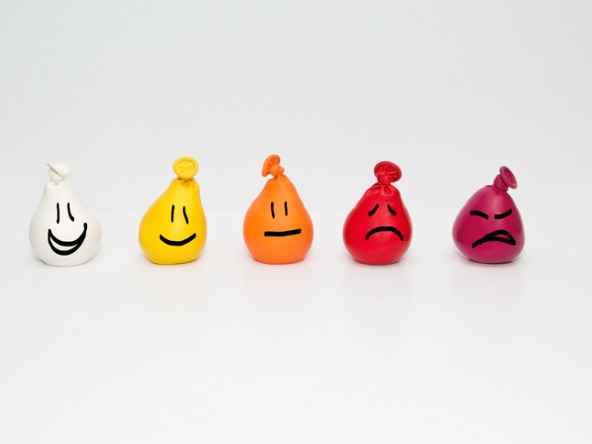The art of emotion in advertising

In 1961, legendary ad man Rosser Reeves established the era’s defining theory of effective advertising: the art of getting a unique selling point into the heads of consumers. Fast forward 60 years, and advertisers are less captivated by Reeves’ idea that adverts succeed by persuading with facts. Instead, the fashionable view is that effective advertising works by evoking emotions.
Today, advertising isn’t the only field that praises the power of emotion. Behavioural economics – the foundations of Nudge theory – suggests that we make ‘irrational’ decisions based on emotion rather than considered evaluation. For political scientists, the 2016 victories for Trump and Brexit became the critical evidence that we live in a ‘post truth era’, when politicians win by moving voters rather than reasoning with them.
However, the complex topic of emotion has become prone to oversimplification. Many advertisers hold on to false beliefs about what emotion is and how it works in advertising. Most importantly, they mistakenly believe that emotion is a panacea: the only ingredient you need to make a successful ad.
So how does emotion really work in advertising? And is simply evoking emotion enough to make ads truly effective?
Studying the science
Advertisers tend to think that evoking emotion only happens when consumers are laughing hysterically or tearing up; in other words, the typical image of powerful emotions. In fact, evoking emotion through advertising is a much subtler process. This is because, in scientific terms, emotions are simple physiological responses to stimuli we experience – increased heart rate, dilated pupils, and so on. They occur instantly and can be measured objectively.
When advertisers refer to emotions, they are strictly referring to feelings. These words might be used interchangeably, but feelings are actually the way we express our emotions; slow and subjective states like happiness or surprise. Importantly, it’s emotions that take the lead: we can experience emotions without feelings, but we can’t experience feelings without emotions.
This distinction is important. It means that advertising can successfully evoke emotions without making consumers tear up, or experience any other strong feeling. The common desire to ‘tug at consumers’ heartstrings’ is unnecessarily ambitious – subtle psychological responses are enough to be effective.
Making emotion sell
Psychological research has consistently shown that emotion leads to increased attention; we are unable to pay attention to everything around us, so we prioritise information that evokes emotion. This type of information is also more likely to be remembered. As neuroscientist Roberto Malinow puts it: “you can probably remember where you were when you heard about 9/11, but you probably don’t know where you were on 10th September.”
Given these findings, it’s no surprise that emotion also has a powerful effect on advertising effectiveness. Study after study shows that advertising that evokes emotion is more commercially successful than advertising that doesn’t.
While this outcome is straightforward, the route to achieve it is more complex. All too often, advertisers assume that showing emotion is the only way to evoke emotion. When in fact, this process is more complicated and more challenging than putting a smiley face on screen.
For starters, product-led advertising can be just as effective at evoking emotion as advertising that shows emotion. Products themselves can be funny, shocking, sad and everything in between – Burger King’s Mouldy Whopper repulsed consumers with nothing more than a month-old burger. Sometimes, a bit of clever copy is enough to stir an audience. KFC amused millions with just three letters (FCK) after its UK supply chain collapsed in 2018.
On the flip side, advertising that shows emotion doesn’t necessarily evoke emotion. An advert showing a group of friends laughing is not guaranteed to make the viewers laugh, especially if the characters seem boring and unrelatable. In fact, facial recognition data indicates that actors in ads express three-times the amount of happiness than the viewers watching them.
Demanding distinctiveness
The showing/evoking distinction is just one point overlooked in discussions around emotion. Even when advertising passes the first test – evoking emotion – it often fails the second (and more important) test: effective branding. If consumers don’t know who the advertisement is for, or worse, if they misattribute to a competitor, the ad is effectively useless. It can’t refresh the relevant associations that prompt people to purchase the brand. The elevated attention and memory capacity simply go to waste.
Budweiser’s 2014 Superbowl ad may have received more Facebook likes than any other advert in history, but this likeability couldn’t compensate for the non-existent role of the brand in the story. Consumers remembered the advert but not who it was for. As the brand’s vice-president of marketing summed up, “while everybody loved the puppies, they had zero impact on beer sales”.
Research suggests that the most effective ads show the brand for twice as long and at twice the size versus the average. In other words, the key is to brand big and brand a lot. It’s worth noting there is no evidence that too much branding is bad because it annoys consumers, despite what common sense might suggest. Actually, some of the most loved (and most effective) campaigns of the last decade are branded unmistakably.
Probing assumptions
In an age of consumer centricity and human understanding, emotion will become increasingly important to advertising thinking. The risk is that advertisers are more eager to capitalise on it than understand it.
It’s only by probing the science of emotion that we can learn how to evoke it; a process less extreme than making your audience laugh, and more extensive than showing a character laughing. Crucially, examining emotion helps us understand a fundamental truth – it is the combination of evoking emotion and effective branding that leads to successful advertising.
Sam Salama is senior research executive at Basis Research.

We hope you enjoyed this article.
Research Live is published by MRS.
The Market Research Society (MRS) exists to promote and protect the research sector, showcasing how research delivers impact for businesses and government.
Members of MRS enjoy many benefits including tailoured policy guidance, discounts on training and conferences, and access to member-only content.
For example, there's an archive of winning case studies from over a decade of MRS Awards.
Find out more about the benefits of joining MRS here.














0 Comments